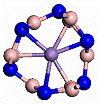Department of Physics and Astronomy: Publications and Other Research
Date of this Version
4-2011
Abstract
The recombination of electrons and holes in semiconducting polymer–fullerene blends has been identified as a main cause of energy loss in organic photovoltaic devices. Generally, an external bias voltage is required to efficiently separate the electrons and holes and thus prevent their recombination. Here we show that a large, permanent, internal electric field can be ensured by incorporating a ferroelectric polymer layer into the device, which eliminates the need for an external bias. The electric field, of the order of 50 V μm–1, potentially induced by the ferroelectric layer is tens of times larger than that achievable by the use of electrodes with different work functions.We show that ferroelectric polymer layers enhanced the efficiency of several types of organic photovoltaic device from 1–2% without layers to 4–5% with layers. These enhanced efficiencies are 10–20% higher than those achieved by other methods, such as morphology and electrode work-function optimization. The devices show the unique characteristics of ferroelectric photovoltaic devices with switchable diode polarity and tunable efficiency.


Comments
Published in Nature Materials 10 (April 2011); pp. 296–302; doi: 10.1038/NMAT2951 Copyright © 2011 Macmillan Publishers Limited. www.nature.com/naturematerials Used by permission.